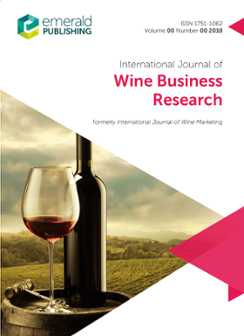
The global wine industry faces a growing need to balance economic growth with environmental responsibility. From reducing water consumption and chemical use to minimizing carbon footprints, wine producers worldwide are exploring ways to innovate sustainably. Hungary, a country known for its rich winemaking traditions, is no exception. We examine how Hungarian wineries are adopting eco-innovation practices and how these strategies vary across different firms.
What is Eco-Innovation?
Eco-innovation refers to the development and implementation of new products, processes, marketing strategies, and organizational models that contribute to environmental sustainability. In the wine sector, this could mean anything from using renewable energy in vineyards and cellars to adopting organic farming methods or introducing eco-friendly packaging. Eco-innovation is critical for addressing the environmental challenges faced by the wine industry, such as high water usage, chemical reliance, and greenhouse gas emissions.
The Hungarian Wine Industry’s Eco-Innovation Journey
While eco-innovation has been well-documented in major wine-producing regions like Italy, France, and Australia, much less is known about how Central European countries, such as Hungary, are adopting these practices. To fill this gap, we conducted a survey of 234 Hungarian wineries, exploring their eco-innovation strategies across four key areas: marketing, organizational, process, and product innovations.
Key Findings: Two Distinct Clusters of Wineries
The study identified two main groups, or clusters, of wineries based on their eco-innovation practices:
Cluster 1: The Innovators – These wineries lead in eco-innovation, adopting a wide range of sustainable practices. They are more likely to engage in high-tech solutions like renewable energy use, advanced cultivation techniques, and digital marketing strategies. The wineries in this cluster also demonstrated stronger engagement with external knowledge sources, such as universities, research institutes, and professional associations. These connections help them stay at the forefront of innovation, accessing cutting-edge technologies and practices that enhance both their environmental performance and competitiveness.
Cluster 2: The Followers – Wineries in this group lag behind in terms of eco-innovation. They tend to adopt fewer sustainable practices, focusing primarily on lower-cost, low-tech solutions, such as waste recycling and minor reductions in chemical use. While these wineries do engage in some eco-innovation, their efforts are typically less ambitious and more incremental.
What Drives Eco-Innovation?
The study highlights several key factors that drive eco-innovation in the Hungarian wine sector:
Knowledge Sharing: Wineries that actively engage with external partners—such as suppliers, competitors, and academic institutions—are more likely to adopt advanced eco-innovations. Cluster 1 wineries, in particular, benefit from strong networks that provide access to new knowledge and technologies.
Firm Size and Resources: While eco-innovation is not strictly limited to larger firms, the study found that wineries with greater financial resources and larger production capacities were more likely to implement high-tech solutions. These firms are better equipped to invest in expensive innovations, such as precision agriculture technologies and renewable energy systems.
Managerial Commitment: The commitment of owners and managers to sustainability plays a crucial role in driving eco-innovation. Wineries that prioritize environmental responsibility are more likely to implement comprehensive sustainability strategies that go beyond basic compliance with regulations.
Policy Implications: Supporting a Sustainable Wine Industry
The findings from this study offer valuable insights for policymakers aiming to promote sustainability in the wine sector. One key takeaway is the importance of fostering collaboration between wineries and external knowledge sources. By facilitating partnerships between wine producers, universities, and research institutions, policymakers can help smaller wineries overcome the barriers to eco-innovation, such as limited resources and expertise.
Moreover, financial incentives—such as grants, tax reductions, or subsidies for sustainable investments—could encourage more wineries to adopt high-tech, high-impact eco-innovation practices. Streamlining access to funding for renewable energy projects, advanced cultivation techniques, and eco-friendly packaging solutions could accelerate the transition to a more sustainable wine industry.
Looking Ahead: A Path to Sustainability
As climate change continues to impact traditional wine-growing regions, the need for eco-innovation in the wine sector will only increase. The Hungarian wine industry, with its deep-rooted traditions and emerging commitment to sustainability, is well-positioned to be a leader in eco-innovation. By continuing to invest in knowledge-sharing networks and high-tech solutions, Hungarian wineries can enhance their environmental performance while maintaining competitiveness in the global market.
The research by Lekics and Fertő underscores that eco-innovation is not just about reducing environmental impact—it’s also about ensuring the long-term viability of the wine industry in an increasingly resource-constrained world. As more wineries embrace sustainability, the future of wine production in Hungary looks not only greener but also more resilient.
Lekics, V., & Fertő, I. (2024). Understanding eco-innovation in the Hungarian wine sector. International Journal of Wine Business Research.
https://doi.org/10.1108/IJWBR-02-2024-0006


